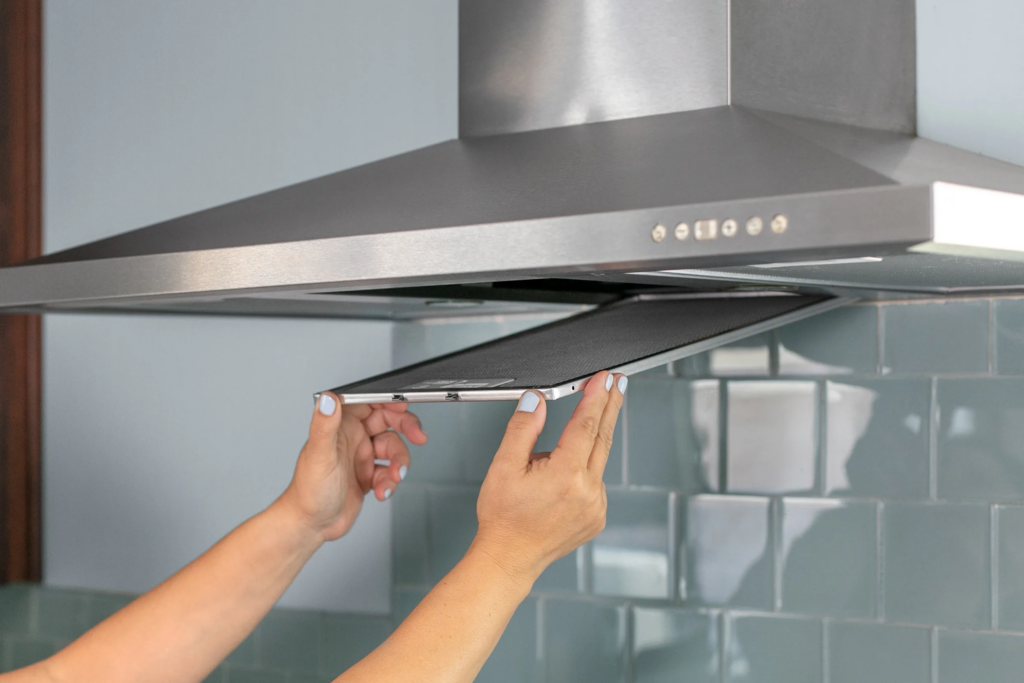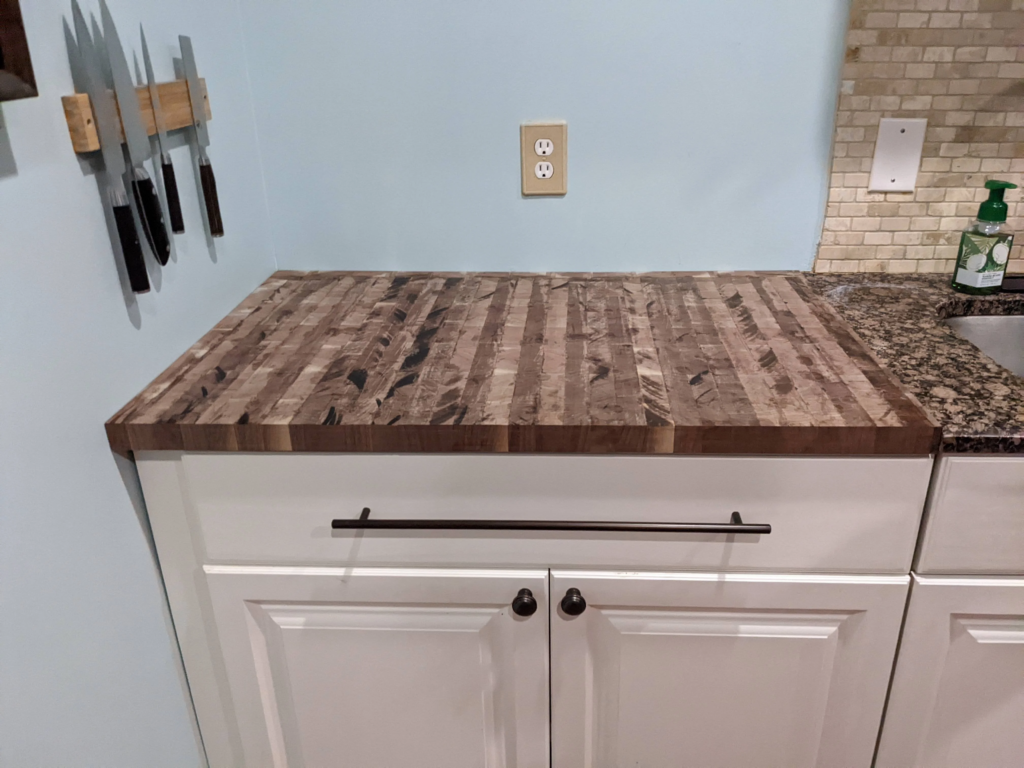Feeling overwhelmed by the mess in your kitchen? Fear not, we understand the struggle! In this article, we’re excited to share the secret tips for those easily overlooked spots in your kitchen that need cleaning. Prepare to be amazed at the impact a little additional effort can have!
Here are the things you’re probably forgetting to clean in your kitchen:
Table of Contents
The Top of Your Fridge
It’s easy to forget about the top of your refrigerator. After all, it’s way up there and you don’t often see any big messes when you have a quick peek up there. But if you go back and take a closer look, you’ll be surprised at how many crumbs, dust bunnies and other gunk have made their way up there. It’s important to regularly clean it off so that it stays in top shape.
Begin by removing anything that doesn’t belong on the top of the fridge – like a stack of magazines or books – and putting them somewhere else. Then use a damp cloth or feather duster to gently wipe down the area. This will help rid it of dirt and dust, as well as any cobwebs that may have taken over the area! To finish up, use an all-purpose cleaner to really clean everything off, then use a microfiber cloth for polishing any stuck-on residue left behind from spilled drinks or food items.
By taking just a few minutes out to clean up your fridge (especially the top!), you can ensure it looks its best year-round!
The Inside of Your Microwave
The inside of your microwave collects grease, dust, and food particles with everyday use. To keep the inside of your microwave clean, it should be washed regularly. You can easily do this by making a simple cleaning solution out of vinegar and water.
- Simply mix one cup of white vinegar with one cup of warm water in a microwavable bowl.
- Put the bowl in the microwave, turn on high heat for five minutes, then turn off and leave the door closed for 15 minutes to allow the steam to loosen buildup.
- After that, wipe away any remaining grime with a soft cloth or sponge.
Additionally, you can add a few drops of essential oil to the solution to disinfect and add a pleasant scent while cleaning!
The Seals on Your Refrigerator Doors

The door seals, otherwise known as gaskets, on your refrigerator are often overlooked when it comes to cleaning. However, these seals are important for maintaining a tight and cool seal between the interior of your refrigerator and the outside environment. Neglecting this maintenance can cause cold air to escape, leading to higher energy bills due to your fridge working harder than necessary.
If you haven’t cleaned these seals in some time, we recommend doing so every few months or so. To clean them, start by removing any debris from the grooves of the seal with a stiff brush. Next, apply warm water and mild detergent solution and scrub away any remaining dirt or grime buildup. Finally, use a microfiber cloth dampened with rubbing alcohol to sanitize the area where food tends to get stuck on these seals: around the edges and inner rim where food particles get dehydrated until they become dried-on bits of stuck-on invisible grossness!
This method will have your refrigerator running more efficiently and providing better temperature control for all your refrigerated items.
Your Range Hood Filter

Your range hood filter is one of the kitchen items that often gets neglected during routine cleaning. Located beneath the range hood in your kitchen, the grease filters help keep cooking fumes and particulates from entering the environment, as well as catching any material that enters your cooker hood from cooking. Over time, these filters become coated with splattered grease and oil from cooking and need to be cleaned or replaced.
To keep them working effectively, it’s recommended you scrub them on a regular basis. Most filters can easily be removed for cleaning but depending on their condition—or if you’re replacing them—you may need professional help for cleaning services. Without regular cleaning, grease and smoke can build up in your kitchen increasing both fire risk as well as making it difficult to maintain satisfactory cleanliness in your home.
The Inside of Your Oven
Cleaning the inside of your oven is an important but often forgotten part of taking care of your kitchen. Without regular cleaning, food residue, grease, smoke particles and other grime can build up inside your oven, creating an unpleasant odor and reducing the efficiency of your appliance. Fortunately, there are several options available to make this chore easier. Before you begin cleaning your oven, make sure all burners are off and give the interior enough time to cool down.
For a quick clean-up, use an all-purpose cleaner or a mixture of liquid dishwashing detergent and warm water with a sponge. When using this method to clean light food residue or smoke particles from non-porous surfaces like stainless steel or enameled cast iron surfaces, scrub gently in a circular motion from top to bottom with a non-abrasive sponge. Wipe away the solution with damp towels once finished scrubbing. Avoid abrasive cleaners such as steel wool pads or scouring powder as these can damage high gloss finishes found on some ovens.
For more stubborn stains or spots stained with grease that hasn’t been wiped away in a while, apply baking soda paste onto the affected areas and let it sit for about 30 minutes before wiping it away. Don’t forget to wipe down heating elements after cleaning as residues from cleaners may cause overheating and pose safety risks when in use again! Make sure all surfaces are completely dry before closing up your oven again for continued efficient heating performance in future use.
The Handles and Buttons on Your Appliances

When it comes to running a clean and organized kitchen, most people remember to wipe down the main surfaces but often forget about the handles, buttons and other parts of their appliances. Paying special attention to these features every time you perform a deep clean will prevent dirt, grease and grime build-up and help make your kitchen sparkle.
Take a few minutes to pay close attention to all of the handles, knobs and dials on your fridge, range and other small appliances like stand mixers or blenders. Grease from cooking can easily get stuck in between knobs or collect around edges that don’t get wiped down during general cleaning.
To clean these items easily without damaging them use warm water with a few drops of dish soap—rubbing alcohol is also effective for tougher spots. Use a soft cloth or sponge soaked in soapy water around each knob and carefully scrub off any grime before rinsing with lukewarm water. Wet Q-tips are also great for cleaning tight corners, nooks and crannies that regular cloths can’t reach.
With larger appliances such as fridges you should take extra caution when wiping buttons – this is where food debris gets stuck more than any other part of an appliance. Make sure not to press any of the buttons or accidentally change any settings while you’re wiping them down—a toothpick can help dislodge anything stuck in between if necessary. You may even want to consult the instruction manual if you’re unsure how best to clean certain controls but they are mostly made from durable plastics that won’t be damaged by regular cleaning products.
Your Sink Drain and Disposal
While cleaning your sink can help to keep your kitchen looking tidy and organized, the drain and garbage disposal can often be forgotten when it comes to regular cleaning. However, there are a number of harmful bacteria and germs that can accumulate in these hard-to-reach areas if they are not cleaned on a regular basis. While there are several store-bought chemical cleaners available for kitchen sinks, non-toxic methods offer an environmentally friendly approach.
To clean your sink drain or garbage disposal:
- Pour one gallon of boiling water down the drain. This will flush away debris and residue that would be difficult to remove with a scrubbing motion alone.
- Mix equal parts baking soda and vinegar in a bowl or container, then pour down the sink drain. The combination of baking soda and vinegar is an effective all-natural cleaner that will help break down any organic matter trapped in the pipes. Let this mixture sit for 10 minutes before continuing with the next step.
- Scrub down the insides of the sink with an abrasive sponge or brush to remove any remaining residue from inside surfaces as well as around trap pipes where food particles can adhere without you even seeing them! If you prefer not to use abrasive sponges or brushes, you can substitute them with a cloth dampened with hot soapy water—but make sure to rinse thoroughly afterwards so that none of this mixture gets stuck in hidden crevices or drains!
- Rinse out all surfaces of your sink quickly so that no soap residue remains on surfaces exposed to food products during cooking or preparation activities such as cutting boards. You may also want to periodically sanitize exposed surfaces by spraying them lightly with white distilled vinegar or wiping them down with diluted bleach/water solution (one part bleach per three parts water).
The Underside of Your Countertops

It can be easy to become consumed with scrubbing the most apparent and easy-to-reach spaces of your kitchen. However, no cleaning session should be complete without tending to the underside of your countertops. This area can easily collect bacteria due to its obscurity.
The crevices between your counters and backsplash are a hub for food crumbs and other particles that get kicked up while cooking or baking. To adequately clean these hard-to-reach spots, first use a dry, microfiber cloth to pick up all the debris that has settled here. Once the bulk of it has been removed, spray surface cleaner onto another cloth and use this for a more thorough cleaning of both your countertops and its undersides.
Finally reach for an old toothbrush or scrub brush to really get into any tight spots or grooves on both surfaces. Give everything in this area one last wipe down before returning everything back into place so you can feel confident in giving your kitchen pristine attention.
Your Reusable Grocery Bags
Reusable grocery bags are an important part of sustainability and would take the place of hundreds of single-use plastic bags. But your grocery bags, cloth or otherwise, need to be cleaned on a regular basis. Not only do they collect germs from their many trips to the store, but they may also be carrying food particles, crumbs and other bits your purchases might leave behind.
To keep your reusable bags clean, start by emptying them out and discarding any food remnants after each shopping trip. Then give them a quick rinse with some dish soap and warm water – you don’t need to fill a sink or tub, just carefully spot clean with a damp cloth or sponge before letting the fabric air dry if possible. If washing isn’t an option due to the fabric material or harsh weather conditions, you should use a disinfectant spray specifically designed for cleaning soft surfaces around your home. Be sure to read the directions carefully and follow all safety precautions when using different cleaning supplies in your kitchen.
When not in use it is also recommended that you store them in a safe area where dirt or food spills can’t accumulate on them. Place them high up on shelving units where possible for added protection from any spills or kitchen splatters that could occur. This way your reusable grocery bags will have a longer shelf life and it will reduce the amount of people constantly spreading germs throughout their homes.
Conclusion
It’s important to remember to clean all of the overlooked surfaces in your kitchen, such as your refrigerator seals, tile grout, and countertops. It’s also important to clean the appliances you use regularly. Cleaning your kitchen also means remembering items that might not seem visible on the surface, like filters on range hoods and microwaves.
No matter its size, your kitchen can become a real health hazard if it isn’t cleaned properly. With regular maintenance, you can minimize bacteria and make sure mold stays at bay. Regular cleaning also helps maintain an organized kitchen that enables optimal food preparation—and makes life in the kitchen that much easier!
Frequently Asked Questions
How often should I clean my kitchen?
It is recommended that you clean your kitchen on a regular basis, at least once a week.
What items in my kitchen should I be sure to clean?
In addition to the usual cleaning of counters, floors, and surfaces, you should also be sure to clean your refrigerator, range hood, stovetop, sink, and other appliances.
What items in my kitchen often get forgotten?
Commonly forgotten items in the kitchen include the refrigerator coils, dishwasher filter, food disposal, and the backsplash behind the sink.

